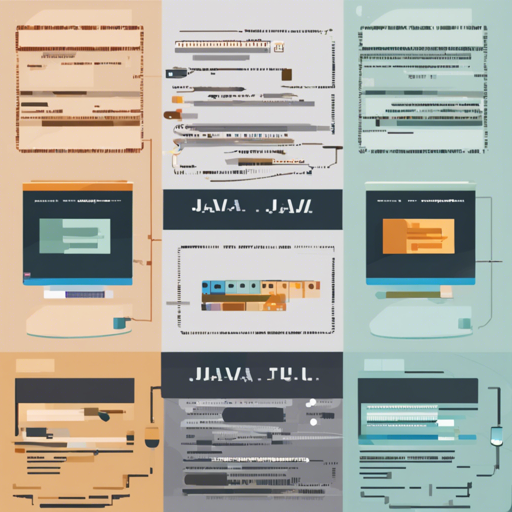In the digital age, understanding the differences between text versions is essential, especially in collaborative projects. The Java Diff Utils library is an open-source tool designed to facilitate text comparison, making it easier to compute differences, apply patches, and display changes clearly. Here’s a guide on how to use this powerful library effectively.
Getting Started
Before diving into the code, you need to have your Java environment set up. Once you’re ready, follow these steps to integrate Java Diff Utils into your project.
Installation
To add the Java Diff Utils library to your project, include the following dependency in your pom.xml if you are using Maven:
<dependency>
<groupId>io.github.java-diff-utils</groupId>
<artifactId>java-diff-utils</artifactId>
<version>4.12</version>
</dependency>Alternatively, if you’re using Gradle, add this line to your dependencies:
implementation 'io.github.java-diff-utils:java-diff-utils:4.12'Using Java Diff Utils
Once the library is installed, you can begin comparing texts. Think of it as a chef preparing two dishes: he wants to see what ingredients are added or changed to perfect the recipe. This library helps you identify those differences.
Producing a One-Liner with Difference Information
This example showcases how to create a one-liner difference output:
DiffRowGenerator generator = DiffRowGenerator.create()
.showInlineDiffs(true)
.mergeOriginalRevised(true)
.inlineDiffByWord(true)
.oldTag("<f - ~>") // Markdown style for strikethrough
.newTag("<f - **>") // Markdown style for bold
.build();
ListDiffRow rows = generator.generateDiffRows(
Arrays.asList("This is a test senctence."),
Arrays.asList("This is a test for diffutils.")
);
System.out.println(rows.get(0).getOldLine());This code snippet initiates the DiffRowGenerator, which visually marks differences between the two sentences, allowing you to see what was changed.
Creating a Side-by-Side View
If you want to compare sentences side by side, you can do it similarly:
DiffRowGenerator generator = DiffRowGenerator.create()
.showInlineDiffs(true)
.inlineDiffByWord(true)
.oldTag("<f - ~>")
.newTag("<f - **>")
.build();
ListDiffRow rows = generator.generateDiffRows(
Arrays.asList("This is a test senctence.", "This is the second line.", "And here is the finish."),
Arrays.asList("This is a test for diffutils.", "This is the second line.")
);
System.out.println("original new");
System.out.println("-----------");
for (DiffRow row : rows) {
System.out.println(row.getOldLine() + " " + row.getNewLine());
}This code generates a view that allows you to visually compare both versions line by line.
Main Features
- Compute differences between two texts.
- Handle various data types that implement
hashCode()andequals(). - Patch and unpatch texts.
- Parse unified diff formats.
- Produce human-readable differences.
- Provide inline difference construction.
- Utilize different diff algorithms including Myers and HistogramDiff.
Troubleshooting
If you encounter issues while working with Java Diff Utils, here are a few troubleshooting tips:
- Ensure that you have the correct version of Java installed. Compatibility issues can stem from using outdated Java versions.
- Double-check your dependency configurations in Maven or Gradle. A small typo can lead to significant issues.
- Make sure that the input data types you are comparing are compatible. Non-matching types can cause unexpected errors.
- Refer to the JavaDocs for detailed documentation on the classes and methods available.
For more insights, updates, or to collaborate on AI development projects, stay connected with fxis.ai.
Conclusion
In summary, the Java Diff Utils library is a powerful tool that simplifies text comparison. Whether you’re working on version control or textual data analysis, this library provides a user-friendly approach to handling differences. At fxis.ai, we believe that such advancements are crucial for the future of AI, as they enable more comprehensive and effective solutions. Our team is continually exploring new methodologies to push the envelope in artificial intelligence, ensuring that our clients benefit from the latest technological innovations.

